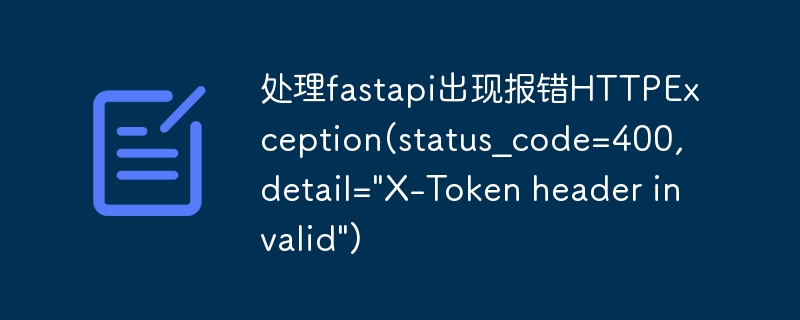
HttpException(status_code=400, detail="X-Token header invalid")是由于在请求头中缺少或无效的X-Token导致的。在fastapi中,当用户请求中缺少或者无效的X-Token时,会抛出这样的异常。通常这是因为应用程序配置了对X-Token的验证,并在验证失败时引发了该异常。
解决这个问题需要在应用程序中添加X-Token的验证逻辑。可以在请求头中检查X-Token是否存在,并验证其有效性。如果X-Token无效,可以抛出HTTPException异常并提供相应的错误码和详细信息。
一种可行的方法是在应用程序的中间件中添加验证逻辑,这样可以在每次请求之前进行验证。
from fastapi import FastAPI, HTTPException, Request
app = FastAPI()
async def check_token(request: Request):
token = request.headers.get("X-Token")
if not token:
raise HTTPException(status_code=400, detail="X-Token header is missing")
if token != "valid_token":
raise HTTPException(status_code=400, detail="X-Token header invalid")
@app.middleware("http")
async def check_token_middleware(request: Request, call_next):
await check_token(request)
response = await call_next(request)
return response
这段代码中, 我们在中间件 check_token_middleware 中添加了一个 check_token 函数,用来检查请求头中是否存在X-Token,并验证它是否有效。如果X-Token无效,将会抛出HTTPException异常。
还可以使用第三方库如 pyJwt 来进行验证,这样可以做到更加严格的验证。
是的,可以这样验证JWT token:
import jwt
from fastapi import FastAPI, HTTPException, Request
app = FastAPI()
async def check_token(request: Request):
token = request.headers.get("X-Token")
if not token:
raise HTTPException(status_code=400, detail="X-Token header is missing")
try:
jwt.decode(token, "secret_key", alGorithms=["HS256"])
except jwt.exceptions.InvalidSignatureError:
raise HTTPException(status_code=400, detail="X-Token header invalid")
@app.middleware("http")
async def check_token_middleware(request: Request, call_next):
await check_token(request)
response = await call_next(request)
return response
在这段代码中,我们使用了第三方库pyjwt来验证请求头中的X-Token。我们使用了jwt.decode()函数来验证token是否有效,并使用了"secret_key"来签名。如果验证失败,将会抛出jwt.exceptions.InvalidSignatureError异常。我们在这里捕获这个异常并抛出HTTPException异常。
需要注意的是, 这只是示例代码, 在生产环境中需要更加严格的验证方式, 例如将secret_key存储在环境变量或者加密的配置文件中。
以上是处理fastapi出现报错HTTPException(status_code=400, detail=\'X-Token header invalid\')的详细内容。更多信息请关注PHP中文网其他相关文章!




